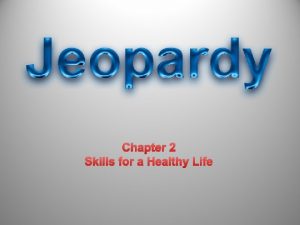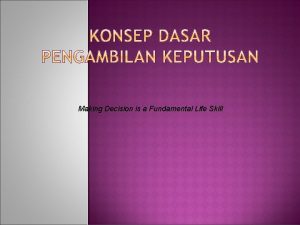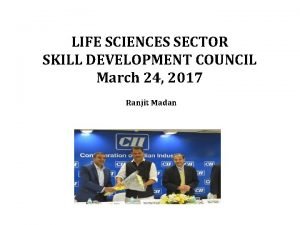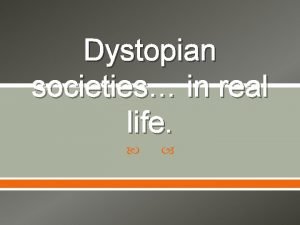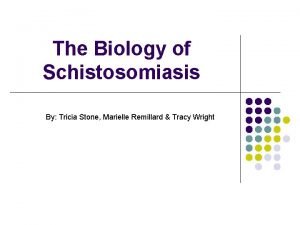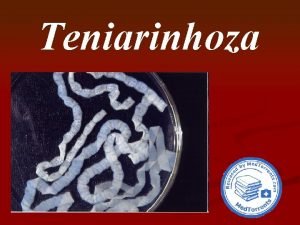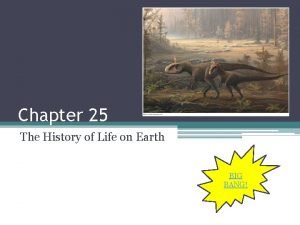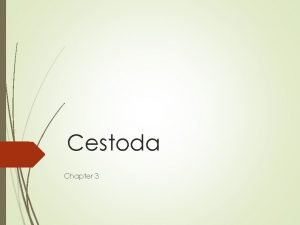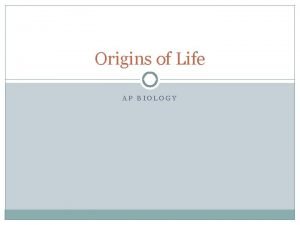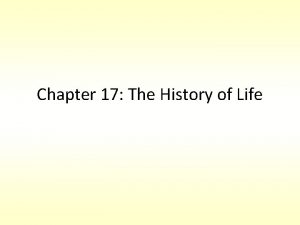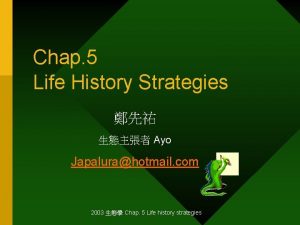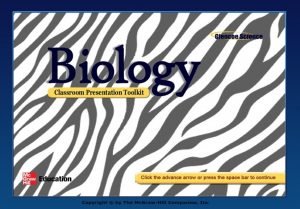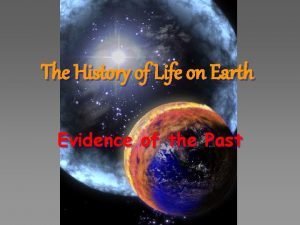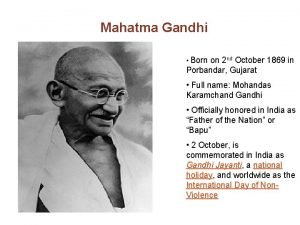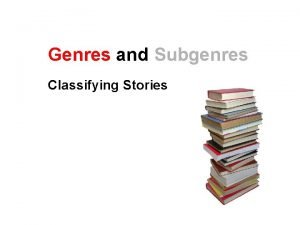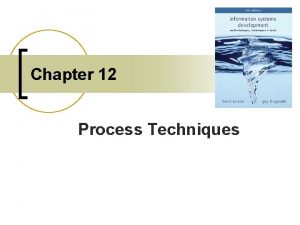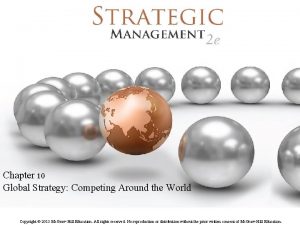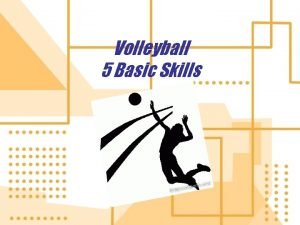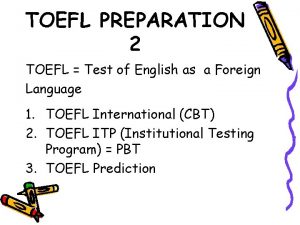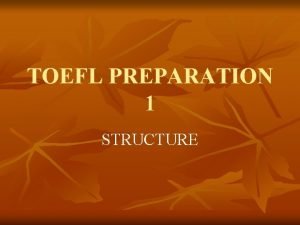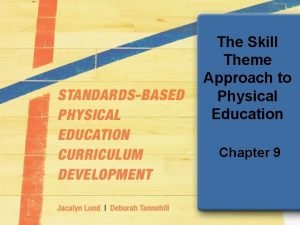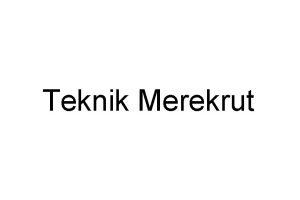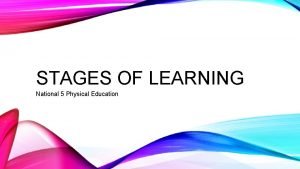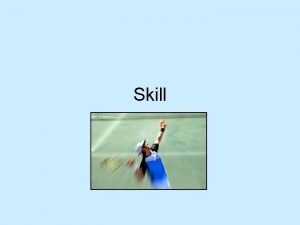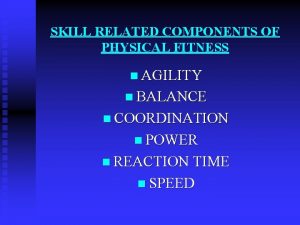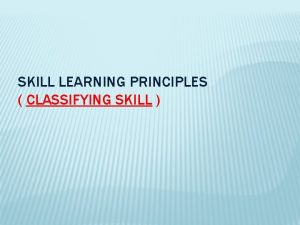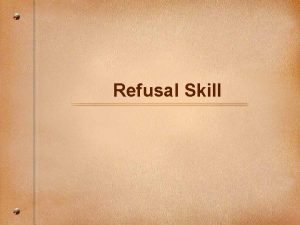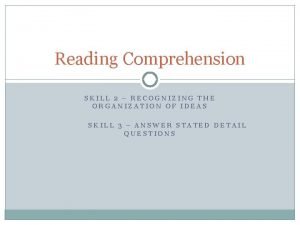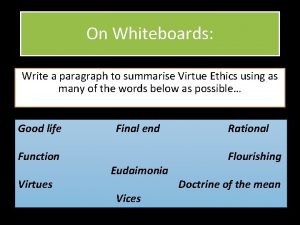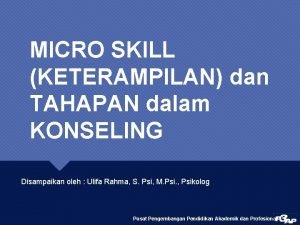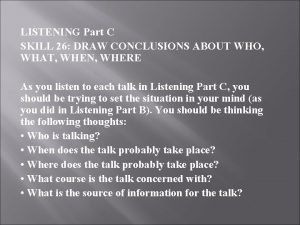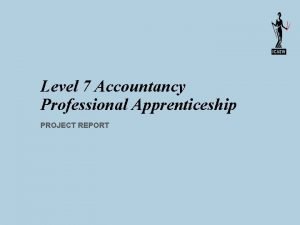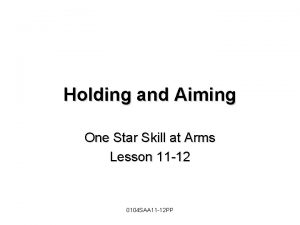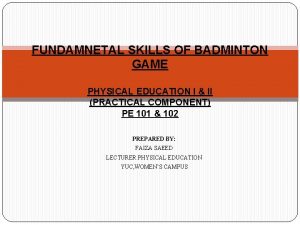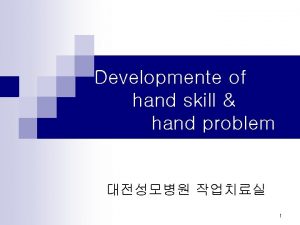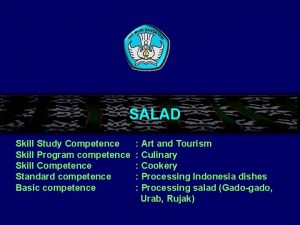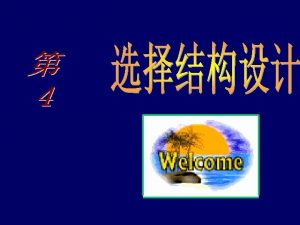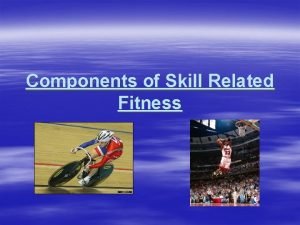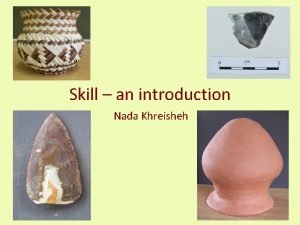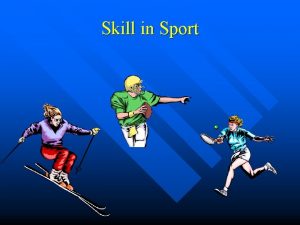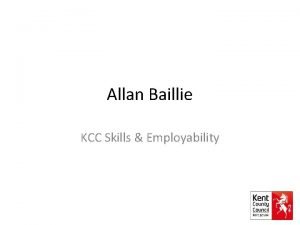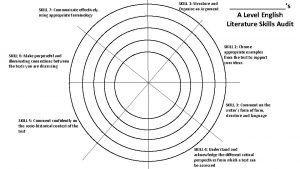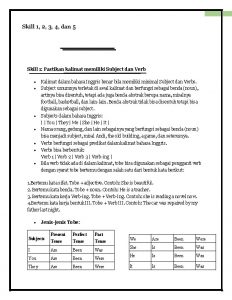Life History Strategy Strategy 1 skill managing any


























































































- Slides: 90

Life History Strategy 生活史策略 • Strategy: 1. skill managing any affair 2. the art of planning operations in war • Life history: An individual’s pattern of allocation, throughout life, of time and energy to various fundamental activities, such as growth, repair of cell and tissue damage, and reproduction

What is life history? 生活史 • The life history is the schedule of an organism’s life and key to survival tactis, including: 生理適應 生存表現 防衛 配子生產 生活史 配偶投資 繁殖表現 保護投資 配對關係 親子照顧 血緣相關照顧

What influences life histories? 什麼影響生活史? • Life histories are influenced by: – body plan and life style of the organism – evolutionary responses to many factors, including: • physical conditions物理條件 • food supply食物 • predators天敵 • other biotic factors, such as competition競爭者等

Study of the Evolution of Life Histories • The first is concerned with individual life history traits. • The second is concerned with links between life history traits. • The third is concerned with links between life histories and habitats n search for pattern and for explanations for those patterns


Fitness(適存值)& Life History • Fitness is ultimately dependent on producing successful offspring, so many life history attributes relate to reproduction: – maturity (age at first reproduction)成熟 – parity (number of reproductive episodes)生產 次數 – fecundity (number of offspring per reproductive episode)產子數 – aging (total length of life)老化 ØReproductive values

Energy Costs and Benefits 125 60 – Correlated with a fewer number of drops, indicating a trade-off between energy gained (food) and energy expended 50 100 � 40 Average number of drops • Zach determined that the optimal flight height in foraging behavior Average number of drops � 30 � 75 Total flight height � 20 Drop height preferred by crows � 50 � 10 � 25 � 2 � 3 � 5 � 7 � 15

Energy allocation &Trade-Offs • Organisms face a problem of allocation of scarce resources (time, energy, materials): – the trade-off: resources used for one function cannot be used for another function

• If patchy habitat, those individuals that live on a poorer patch may need a larger area to obtain all necessary resources—reach ideal free distribution—trade-off between poor habitat quality and reduced competition in marginal habitat

大國臣子與小國國王? Fitness Rich habitat b a Number of competitors Poor habitat c

Life histories balance trade offs. • Principle of Allocation: If organisms use energy for one function such as growth, the amount of energy available for other functions is reduced. • Issues concerning life histories may be phrased in terms of three questions: – how many offspring should an individual produce in each breeding episode? – when should an individual begin to produce offspring? – how often should an individual breed?

Offspring Number Versus Size 子代數與大小 – Leads to trade-offs between functions such as number and size of offspring.


Egg Size and Number in Fish • Fish show more variation in life-history than any other group of animals. – Turner and Trexter found darter populations that produce many small eggs showed less difference in allelic frequencies than populations producing fewer, larger eggs. • Proposed larvae from larger eggs hatch earlier, feed earlier, do not drift as far, and thus do not disperse great distances. – Greater isolation leads to rapid gene differentiation.

Seed Size and Number in Plants • Many families produce small number of larger seeds. – Dispersal mode might influence seed size.

Seed Size and Number in Plants • Westoby et. al. recognized six seed dispersal strategies: – Unassisted: No specialized structures. – Adhesion: Hooks, spines, or barbs. – Wind: Wings, hair, (resistance structures). – Ant: Oil surface coating (elaisome). – Vertebrate: Fleshy coating (aril). – Scatter hoarded: Gathered, stored in caches.

Seed Size and Number in Plants • Small plants producing large number of small seeds appear to have an advantage in areas of high disturbance. – Plants producing large seeds are constrained to producing fewer seedlings more capable of surviving environmental hazards.

Seed Size and Number in Plants • Jakobsson and Eriksson found seed size variation explained many differences in recruitment success. – Larger seeds produce larger seedlings and were associated with increased recruitment.

Life History Variation • Shine and Charnov pointed out vertebrate energy budgets are different before and after sexual maturity. – Before - maintenance or growth. – After - maintenance, growth, or reproduction. – Individuals delaying reproduction will grow faster and reach a larger size. • Increased reproduction rate.

Age at First Reproduction 什麼年齡開始生殖? • At each age, the organism chooses between breeding and not breeding. • The choice to breed carries benefits: – increase in fecundity at that age • The choice to breed carries costs: – reduced survival – reduced fecundity at later ages

成體死亡率與 成熟年紀 Species with higher mortality show higher relative reproductive rate.

Figure 10. 14

Adult Survival Rate Findings supported theory that when adult survival is lower relative to juvenile survival, natural selection will favor allocating greater resources to reproduction.


Reproductive Effort • Semelparous organisms一年生一次 – Often produce groups of same-aged young – cohorts – Cohorts grow at similar rates • Iteroparous organisms一年生多次 – Many young at different ages

• Consider the following remarkable differences in life history between two species of similar size: – thrushes • reproduce when 1 year old • produce several broods of 3 -4 young per year • rarely live beyond 3 or 4 years – petrels • do not reproduce until they are 4 to 5 years old • produce at most a single young per year • may live to be 30 to 40 years old



For a Individual?



Energy Budgets, Beans Free of and under Beetle Attack • Life history strategies evolve under different environmental demands. This can be diagrammatically re presented with alternative energy budget allocations. The size of the arrow represents the size of th e energy investment. (a)Free of beetle attack, beans allocate more to Toxins and Growth than to Reproduction. (b)Under beetle attack, beans evolved a strategy of increased Reproduction, overwhelming beetles with a large output of seeds, but at the expense of Toxin production and vegetative Growth.

Mating Systems – Monogamy 一夫一妻 • Exclusive mating • Common among birds (~90%) of species(before 1980) – Polygamy多夫多妻 • Individuals mate with multiple partners • Polygyny一夫多妻 – – One male mates with multiple females Females mate with one male Females must care for the young Mammals tend to be polygynous • Polyandry一妻多夫 – One female mates with multiple males – Males mate with one female

Types of Polygyny • Resource-based polygyny – Critical resource is patchily distributed or in short supply – Male can dominate resource and breed with more than one visiting female – Disadvantages for the female » Must share resources » More females means less success • Non-resource based polygyny – Harem-based » Common in groups or herds » Protection from predators » Harem master does not remain for long – Communal courting areas – leks




打破一夫一妻的神話 • Rejected by DNA fingerprinting • Few species, How evolved? * Good wife hypothesis of monogamy * Danger hypo. * Mutually Assured Destruction hypo.


Senescence is a decline in function with age老化 • Senescence is an inevitable decline in physiological function with age. • Many functions deteriorate: – most physiological indicators (e. g. , nerve conduction, kidney function) – immune system and other repair mechanisms • Other processes lead to greater mortality: – incidence of tumors and cardiovascular disease

Figure 10. 18

• Not all organisms senescence at the same rate, suggesting that aging may be subject to natural selection: – organisms with inherently shorter life spans may experience weaker selection for mechanisms that prolong life – repair and maintenance are costly; investment in these processes reduces investment in current fecundity 輕修理重生殖


Life History Variation: Intraspecific Level

Figure 10. 6

Lizards

An Experiment with Tadpoles • Tadpoles fed different diets illustrate the complex relationship between size and age at metamorphosis: – individuals with limited food tend to metamorphose at a smaller size and later age than those with adequate food (compromise solution) 食物品質高低影響變態時間

Figure 10. 11


Male guppies, friends and foes • Guppies (Poecilia reticulata) occupy pools separated by waterfalls. In pools where predators, such as the pike cichlid (Crenicichla altra), are present, males are drab. Where predators are absent, male guppies are brightly colored and attract females. 敵人在怎麼辦?


Guppies

Rock Pipit

Dilemma of Prisoners • Game theory evaluates alternative behavioral strategies in situations – Where the outcome depends on each individual’s strategy and the strategy of other individuals


What influences life histories and Can predict them? • Life histories are influenced by: – body plan and life style of the organism – size determines lifestyle Shape reveals function – Examples: • Teeth • Stomach • Successive adaptations over long periods of time



Form Follows Function

Locomotion and Shape • Swimmer Adaptations – Streamlined shape – Tail broad and flat – Undulate through water – Examples: seals, fish, snakes

Flying Adaptations • • • Powerful wings Light skeleton Hollow bones Reduced jaws and legs Reproductive structures that shrink Streamlined digestive tracts

Running Adaptations • Increased stride length • Increased stride rate • Long legs • Specialized shoulders • Flexible spine



Temp. >20°C Humidity > 75%

Size and Metabolic Rate • Size influences metabolic rate • Small warm-blooded animals have greater metabolic rates • Small animals use more calories per gram of body weight • Small animals use more oxygen per gram of body weight


Weight-specific BMR as a function of body weight in various species

Weight-specific metabolic rate as a function of body weight in four groups of vertebrates

Expanding Surface Areas • Some body parts expand their surface areas: – – Webbed feet Intestines Circulatory system Large ears





Intrinsic Rates of Increase內賦增長率 • On average, small organisms have higher rates of per capita increase and more variable populations than large organisms.



The Slow-Fast Continuum 慢郎中與疾驚風 • Life histories vary widely among different species and among populations of the same species. • Several generalizations emerge: – life history traits often vary consistently with respect to habitat or environmental conditions – variation in one life history trait is often correlated with variation in another

The Slow-Fast Continuum • Life history traits are generally organized along a continuum of values: – at the “slow” end of the continuum are organisms (such as elephants, giant tortoises, and oak trees) with: • • • long life slow development delayed maturity high parental investment low reproductive rates – at the “fast” end of the continuum are organisms with the opposite traits (mice, fruit flies, weedy plants)

Life History Classification • Mac. Arthur and Wilson – r selection (per capita rate of increase) • Characteristic high population growth rate. – K selection (carrying capacity) • Characteristic efficient resource use. • Pianka : r and K are ends of a continuum, while most organisms are in-between. – r selection: Unpredictable environments. – K selection: Predictable environments.


r and K: Fundamental Contrasts • Intrinsic Rate of Increase: – Highest in r selected species. • Competitive Ability: – Highest in K selected species. • Reproduction: – r: Numerous individuals rapidly produced. – K: Fewer larger individuals slowly produced.

Plant Life Histories • Grime proposed two most important variables exerting selective pressures in plants: – Intensity of disturbance: • Any process limiting plants by destroying biomass. – Intensity of stress: • External constraints limiting rate of dry matter production.

Plant Life Histories • Four Environmental Extremes: – Low Disturbance : Low Stress – Low Disturbance : High Stress – High Disturbance : Low Stress – High Disturbance : High Stress

Plant Life Histories • Ruderals (highly disturbed habitats) – Grow rapidly and produce seeds quickly. • Stress-Tolerant (high stress - no disturbance) – Grow slowly - conserve resources. • Competitive (low disturbance low stress) – Grow well, but eventually compete with others for resources.

Plant Life Histories

Opportunistic, Equilibrium, and Periodic Life Histories • Winemiller and Rose proposed new classification scheme based on age of reproductive maturity ( ), juvenile survivorship (lx) and fecundity (mx). – Opportunistic: low lx - low mx - early – Equilibrium: high lx - low mx - late – Periodic: low lx - high mx - late

Opportunistic, Equilibrium, and Periodic Life Histories

Reproductive Effort, Offspring Size, and Benefit-Cost Ratios • Charnov developed a new approach to life history classification. – Took a few key life history features and converted them to dimensionless numbers. • By removing the influences of time and size, similarities and differences between groups are easier to identify.

Reproductive Effort, Offspring Size, and Benefit-Cost Ratios
 Hard skills definition
Hard skills definition There isn't a burger
There isn't a burger Any to any connectivity
Any to any connectivity Any question atau any questions
Any question atau any questions Making decision is a fundamental life skill
Making decision is a fundamental life skill The life skill practicing wellness is
The life skill practicing wellness is Tabel proses smart choice
Tabel proses smart choice Life sciences sector skill development council
Life sciences sector skill development council Life skills stress management
Life skills stress management Tabel proses smart choice
Tabel proses smart choice Any list of the greatest
Any list of the greatest Chapter 16 managing the stress in your life
Chapter 16 managing the stress in your life My favorite things in life don't cost any money meaning
My favorite things in life don't cost any money meaning Roles in life examples
Roles in life examples Also history physical
Also history physical Ibrahim family tree
Ibrahim family tree History of software development life cycle
History of software development life cycle Examples of a dystopian society in real life
Examples of a dystopian society in real life Schistosomes
Schistosomes Taenia saginata
Taenia saginata Chapter 36 population ecology
Chapter 36 population ecology Chapter 25 the history of life on earth
Chapter 25 the history of life on earth Prolatil
Prolatil Iteration control structures
Iteration control structures Aerobic bacteria
Aerobic bacteria Section 17-4 patterns of evolution
Section 17-4 patterns of evolution Life history
Life history The history of life section 1 fossil evidence of change
The history of life section 1 fossil evidence of change Tuzo wilson
Tuzo wilson About gandhi in english
About gandhi in english Realistic fiction subgenres
Realistic fiction subgenres Entity life history
Entity life history Corporate strategy vs business strategy
Corporate strategy vs business strategy Transnational strategy vs global strategy
Transnational strategy vs global strategy Chase and level strategy example
Chase and level strategy example Multidomestic strategy example
Multidomestic strategy example Aligning hr strategy with business strategy
Aligning hr strategy with business strategy Porter’s diamond of national advantage
Porter’s diamond of national advantage The strategy making strategy executing process
The strategy making strategy executing process Strategy formulation vs strategy implementation
Strategy formulation vs strategy implementation What are listening strategies
What are listening strategies Directional strategies in strategic management
Directional strategies in strategic management International or multinational
International or multinational Black board skill
Black board skill Volleyball 5 skills
Volleyball 5 skills Phone their neighbors toefl
Phone their neighbors toefl Skill 24 adjectives and adverbs
Skill 24 adjectives and adverbs Intrapersonal skills vs interpersonal skills
Intrapersonal skills vs interpersonal skills What are skill themes
What are skill themes Math is not an essential skill for foodservice managers.
Math is not an essential skill for foodservice managers. 6 components of fitness
6 components of fitness Skill mempengaruhi orang lain
Skill mempengaruhi orang lain Password test english
Password test english Stages of learning pe
Stages of learning pe What is skimming technique
What is skimming technique Characteristics of skill
Characteristics of skill Ability to move the body parts swiftly
Ability to move the body parts swiftly Continuous skill examples
Continuous skill examples Scientific skills in science
Scientific skills in science 4 refusal skills
4 refusal skills Skill 2 recognize the organization of ideas
Skill 2 recognize the organization of ideas Skill 2 recognize the organization of ideas
Skill 2 recognize the organization of ideas Presentation skill definition
Presentation skill definition Knowledge skill
Knowledge skill Paragraph on virtue
Paragraph on virtue Credit frame
Credit frame Lirik lagu kami sedia membantu
Lirik lagu kami sedia membantu Five disadvantages of micro teaching
Five disadvantages of micro teaching Micro skill adalah
Micro skill adalah Skill 9: listen for almost negative expressions
Skill 9: listen for almost negative expressions Skill 26
Skill 26 Icaew project report deadline
Icaew project report deadline Play skill development
Play skill development Three-skill approach
Three-skill approach Contoh transforming beliefs
Contoh transforming beliefs Jist works
Jist works Interpersonal skill adalah
Interpersonal skill adalah Manfaat interpersonal skill
Manfaat interpersonal skill Interpersonal skill adalah
Interpersonal skill adalah Human resource planning definition
Human resource planning definition Totaps scenarios
Totaps scenarios Skill survey healthcare hiring
Skill survey healthcare hiring Skill at arms meaning
Skill at arms meaning Discrete skills in badminton
Discrete skills in badminton Health-related
Health-related Gaisce bronze award sheet
Gaisce bronze award sheet Forehand grip trajectory
Forehand grip trajectory Enterprise skill
Enterprise skill Logia meaning in technology
Logia meaning in technology Dynamic tripod grasp
Dynamic tripod grasp Jason peake
Jason peake





